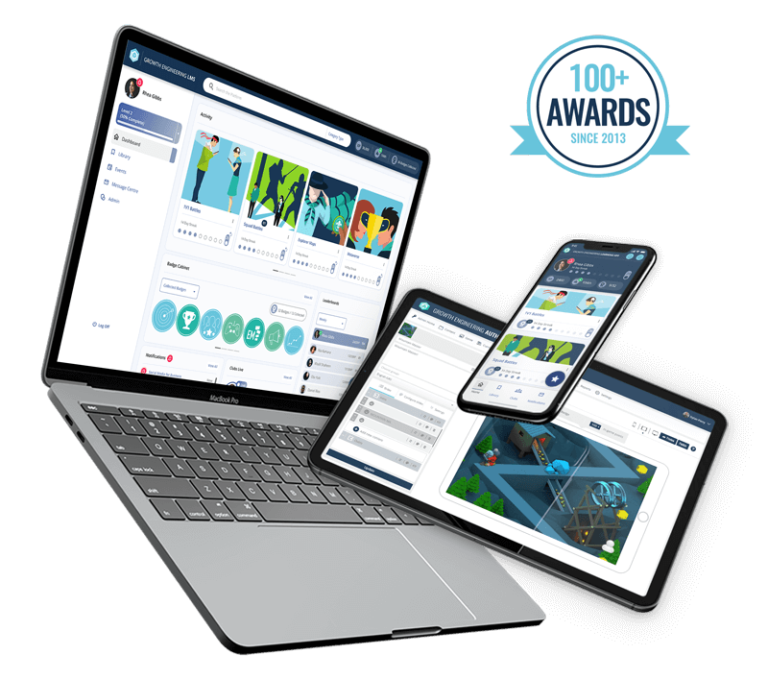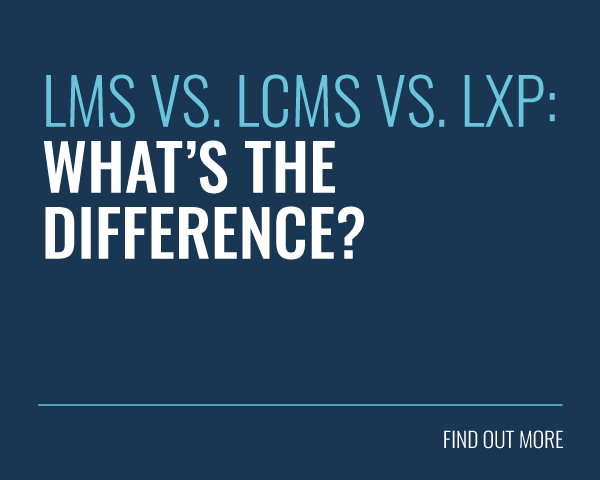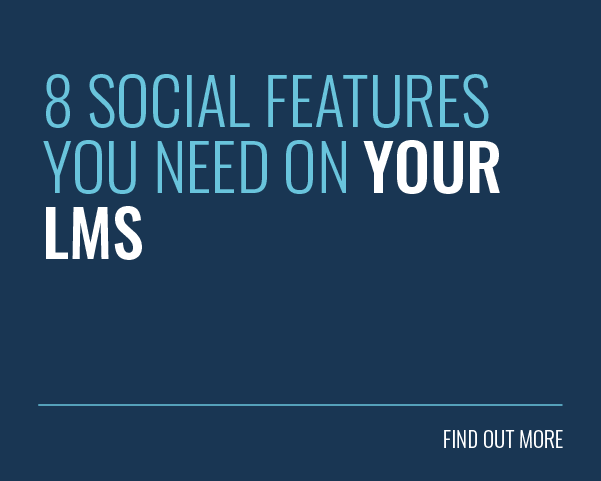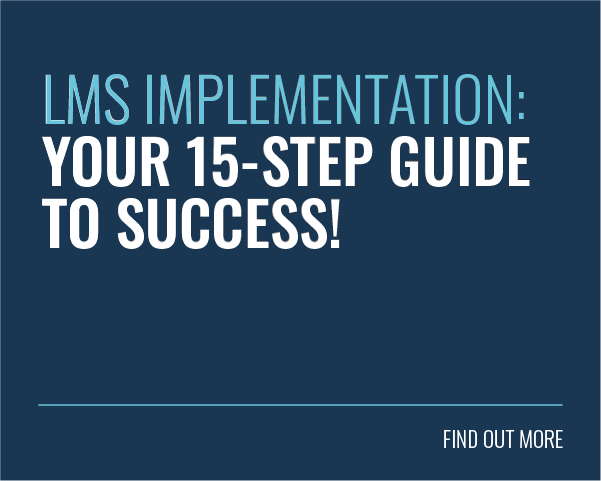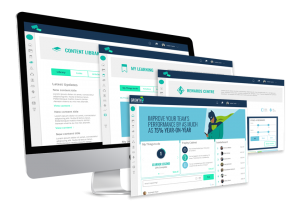 A fully customisable white label learning management system (LMS) is every training manager’s dream. Your employees know your company’s brand and identify with it. It feels like home to them.
A fully customisable white label learning management system (LMS) is every training manager’s dream. Your employees know your company’s brand and identify with it. It feels like home to them.
If your LMS is able to reflect your company’s brand then it means you don’t have to spell out what your values are. Your brand does that work for you. Your logo, your terminology and your colour scheme all work together to communicate who you are.
This is something that everybody can buy into. Employees at organisations that invest in company branding are 27% more likely to feel positive about their company’s future!
This article is a breakdown of 12 features you need for the perfect white label LMS. But first, let’s take a look at its definition and its benefits!
What is White Labelling?
A white label product or service is one that’s produced by one company, but is able to be fully customised by another. In other words, you can purchase the product and then customise it to the extent that you remove any trace of the original vendor’s branding.
Picture a product, covered with a white label that reads, ‘Your Brand Goes Here’. That way you can add in your logo and brand identity, associating it with your company. The alternative is not having a branded platform and going with a generic LMS. Or, having to build your own solution, which can be pretty costly and time consuming.
Most LMSs will let you customise the learning environment. But to varying degrees. You should take the time to consider whether your vendor of choice is able to meet your branding needs.
You don’t, for instance, want the vendor’s logo or brand to pop up randomly throughout your learners’ training journey. Additionally, you should check to see if you’re able to customise the platform yourself. In some cases, you may have to rely on the vendor to do it for you, which can result in troublesome delays.
Once you’ve selected your white label LMS, it’s time to get customising. You’ll have a variety of configuration options to play with. It can potentially start to feel overwhelming and you may not know where to start. But don’t fret, we’ve got you covered.
In this article, we’ll take you through an LMS customisation checklist. If you follow these steps, you’ll end up with a learning system that meets your brand specifications (or your specific design brief).
We’ll also go through the top customisation features your LMS needs to have. But first, let’s take a look at the benefits of a white label LMS!
What Are The Benefits of a White Label LMS?
A white label LMS (such as Growth Engineering LMS) comes with a wide range of advantages. These include:
1. Time-saving
![]()
Building your own LMS takes, on average, between 400 and 500 hours. And that’s just a basic build before any iterations. So it can actually take you much, much longer. The alternative is purchasing a white label LMS from a SaaS provider. That way you can customise the platform to your heart’s content, without having to build it from the ground up. This will save you considerable time and effort.
2. Avoid Mistakes
We’re software providers who have been in the game for nearly two decades. Therefore, we’ve made mistakes along the way and sometimes they’ve been costly. But they helped us to get to the position we are in today. We’ve ironed all the kinks out of our development process. As a result, you don’t have to go through the same mistakes we did and can simply start with an amazing LMS from the get-go!
3. Cost Saving
![]()
Creating a learning system from scratch is no cheap feat. In fact, the cost of one with just basic functionality ranges between $30,000 and $120,000. Not to mention server costs, ongoing maintenance and general overhead. Alternatively, you could use a white label LMS, save time and money on the setup and shift your focus on engaging your learners!
4. Branding
A white label LMS is a great way to further your brand. Not only does it look slick, but it helps a lot with your reputation. Nine out of ten candidates say they’re more likely to apply to a company that puts real effort into their branding. It also has financial advantages. Maintaining consistency with your branding across all your platforms can increase revenue by 23%.
5. Expertise
![]()
We’ve also tapped into expertise in brain science, gamification and social learning to create an engagement-focused platform. Sure, you could do the same thing, but it could take years to develop. What’s more, when you partner with a SaaS provider, you’re forming a strong relationship. You’ll be assigned a Customer Success Manager who will provide you with tips, tricks, best practice advice and more. Doesn’t that sound better than going it alone?
6. Better Support
If something goes wrong with your LMS, troubleshooting can be a pain. However, if you decide to go with a white-label LMS, the provider will resolve the issue for you (in line with their Service Level Agreement). For example, here at Growth Engineering, we have an ‘always open’ online Support Centre, Live Chat support options, a customer portal and much more. This can help you save on overall costs by 15% on average.
As you can see, a white label LMS can help to support your company in a variety of ways. But what are key customisation options you should be looking for on your white label learning system? Keep reading to find out!
White Label LMS Customisation Checklist:
1. Custom Logo
When you hear the word ‘brand’, the chances are the next word that pops into your head is ‘logo’. That’s how important your logo is. It’s a vital addition to your LMS.
A good logo should embody your brand and stick in people’s minds. More than anything else, it serves to identify your company. For example, the Coca-Cola logo is recognised by a whopping 90% of the world’s population.
This is why marketing departments spend so much time and energy making sure that it’s the perfect 2D representation of the company. You should put all that hard work to good use and give your logo pride of place on your LMS.
Every time a learner logs into your company’s LMS, they’re logging into a fully branded extension of your company’s online presence. This means that your company’s logo should be ever-present. It will typically hold pride of place in the top left of your platform.
Its presence makes the training more relevant for your learners and acts like a seal of approval, helping them feel like part of a community working towards something bigger. That’s what we like to call Epic Meaning!
2. Widget Dashboard
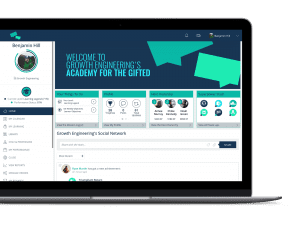
Widgets display relevant, glanceable content and people love them. They were introduced to iPhones with the release of iOS 14. Upon release, iPhone users couldn’t get enough of the various customisation options that were now available to them. Within a week, apps like Widgetsmith were downloaded a shocking 13.7 million times.
On a white label LMS, widgets are the building blocks of a learner’s dashboard. They provide a mini summary of different areas of the LMS and functionality that is accessible right from the user’s home screen. If a learner wants more information, clicking on the relevant widget will take them to that area.
For example, the Badge Cabinet, will show a few recent badges that you have been awarded. Or My Things to Do will display a task that you’ve been assigned. Clicking on either of these items will then display further information to the learner.
It’s a really informative feature that helps learners to navigate the LMS in a more efficient manner. It also provides you with a bounty of new customisation options. For instance, you’re able to pick and choose which widgets you want to appear on a learner’s dashboard.
In most cases, you’ll be able to select different layouts based on learners’ roles. After all, your managers will likely have different priorities than their direct reports. As such, they’ll want to prioritise reporting widgets and other ways of keeping tabs on what their team is getting up to!
3. Custom Colour Palette
Your colour palette doesn’t simply signpost your company. It communicates an entire range of emotions. Your colour palette taps into your learners’ subconscious minds and influences how they feel about your brand.
Brand recognition can be boosted by up to 80% if you utilise a consistent colour palette. Additionally, bear in mind that it takes only 0.05 seconds for someone to make a judgement on a website. If the colours on your LMS have instant brand recognition, learners will be more willing to engage with it from the start.
As your colours say so much about your identity as a company, you need to make sure that your white label LMS lets you align the colour palette with your brand. That way you can ensure your LMS is a perfect fit for your company.
You can easily change the entire colour scheme of your platform when using Growth Engineering LMS. Bringing the colour scheme in line with your company’s brand adds those finishing touches which make your LMS truly feel like part of your company.
4. Custom Domain Name
A custom domain is a unique, branded name that’s used to identify a website. If you look at the address bar of your browser, you’ll see ours. There are over 367.3 million domain names, so yours needs to stand out. With a white label LMS, you get to choose whatever domain name your heart desires. There are multiple benefits to a custom domain name:
- It provides you with yet another branding opportunity. Each time your learners type your domain name into their browsers, they’ll think of you!
- It provides you with an opportunity to extend the theme of your platform. For instance, if you call your learning environment ‘The Hub’, you could include this terminology within the domain name you select.
- Perhaps most importantly, it affects search engine optimisation (SEO). A domain name clearly linked to your brand will positively affect SEO by increasing visibility. This will drive quality traffic to the websites under your company’s umbrella.
As you can see, it’s important to get creative with your domain name!
5. Custom Banners & Imagery
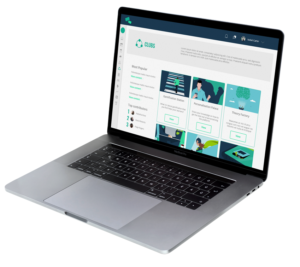
Many learning systems provide an opportunity for you to upload banners and imagery throughout the platform. This helps you to advertise key learning interventions, or drive deeper Epic Meaning.
For instance, you could add a banner to your Learner Dashboard that highlights new content that is available through the Library. Or you could use this space to share a welcoming message with your learners.
With a white label LMS, you can create your own banners in almost any programme and simply upload them. Growth Engineering LMS supports a variety of file formats, so it couldn’t be simpler. A banner can make an LMS look striking and modern where it might otherwise look bland and empty.
Personalised banners are shown to have an 8% better click rate than generic ones. They’re also a foolproof way to lead learners to new content and your LMS will look all the better for doing so.
6. Custom Email Alerts
No one likes having an inbox full of bland emails. What’s more, no employee likes having a full inbox. One third of employees (38%) have said that email fatigue could lead them to resign.
Furthermore, on average, emails amount to 16% of all productivity hindrances. Luckily, an advanced white label LMS lets you create custom email templates that your learners will be excited to open, rather than feel stressed about.
With a splash of colour and a bit of creativity (fueled by some HTML magic), the emails you send could brighten your learners’ day, rather than fill their spam folder.
Growth Engineering LMS comes loaded with a whole range of email templates that you can turn on or off as needed. You can add your company branding to each template and create new ones to share with your learners.
You can then edit the text of any automated email. This is another opportunity for you to introduce your terminology into the learning experience. Once completed, the LMS will send these emails to your learners when trigger criteria are met. Content can range from a welcome email when they sign up, to a notification that they’ve been assigned new training materials.
Customisable email templates are a powerful tool for communicating with learners. In fact, better communication between employees has been shown to improve productivity by 25-35%!
7. Microlearning & Branded Training
Microlearning reframes larger chunks of content into bite-sized chunks. This makes it quicker to produce and easier to consume. Microlearning could be short eLearning units (typically 3-8 minutes long), or videos, audio and any other mediums that demand learner interaction.
The modern learner’s attention span is short. In 2000, the average attention span was around 12 seconds. Within the last few years, that’s fallen to a mere eight seconds. This means that instructional designers only have a short amount of time to capture and maintain their learners’ attention.
Consequently, microlearning is an essential LMS feature and quickly becoming the preferred choice for both formal and informal learning. It’s simple, quick and very effective. But for your content to be most effective, it needs to be branded. This helps to keep things consistent and to ensure your content is perceived as having value by your learners.
There are a number of ways you can achieve this. You can use a third party content creator to build eLearning content in line with your specifications. Or you can find an authoring tool that has all the customisation options you need!
8. Social Features
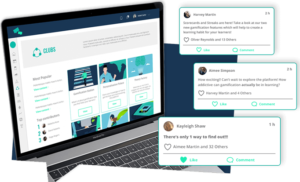
Social learning theory can be attributed to experiments by Albert Bandura. He proved that our behaviour is often an imitation of others. Furthermore, he noted that whilst we like to learn from others, we also like to learn with others.
This approach is effective, as we often learn better when we learn with others. This helps us to better contextualise information and prevent intellectual capital from leaking out of organisations. Indeed, from a survey of over 9,000 employees, 91% believed that sharing knowledge with your team is crucial.
Some of the social features on an LMS include Live Chat, Experts and Clubs. These features let learners engage with like-minded people and share their knowledge. Social features like these help to build trust, which can improve productivity by 50%.
Of course, these features provide you with new opportunities for customisation. For instance, each Club will need its own name and associated imagery.
If the social areas of your platform feel disconnected from your brand, your learners are unlikely to engage with them. On the other hand, if they feel familiar to your learners, you could end up creating a powerful knowledge sharing community.
9. Flexible Learning Pathways
Learning is an exploratory activity by nature. As you learn, you’re exposed to new and exciting information. You never know where the journey may end up.
When looking for your white label LMS, take a look at the user hierarchy and make sure it’s flexible enough to let you achieve your training goals. With learning being the curiosity-driven expedition that it is, the last thing your LMS should do is stifle your learners’ curiosity.
With Growth Engineering LMS, you can give learners complete control over their training and let them take the learning pathway that best suits them. These custom-built pathways contain ‘Required’ content that must be completed to progress and ‘Optional’ content that may be of further interest.
With an LMS user hierarchy, you can create learning pathways for different groups of users. From the entire company down to specific individuals, and just about every other combination in between! This means that you have the option to create something truly relevant for each learner.
With technological advancements today, this is even easier. Machine learning (ML) is a type of artificial intelligence (AI). It allows software to become more accurate at predicting outcomes without being programmed by humans to do so. Therefore, it could automatically create pathways for users depending on their job role or location.
This will help to improve efficiency. But the fun doesn’t stop there. There are a wide-variety of potential machine learning applications within the learning landscape.
10. Gamification
Gamification can take boring tasks and help make them fun. It’s the process of applying game mechanics to a non-gaming environment. Game mechanics include things like badges, leaderboards and experience points (XP).
By awarding learners with badges and points it supercharges their engagement. 95% of employees enjoy gamified experiences. Furthermore, gamified content leads to 14% higher assessment scores. It’s not just fun, it’s also effective!
Leaving the increased engagement aside, gamification gives learning system admins a whole extra layer of personality to add to the platform. They can create teams, customise badges, alter certificates and alter terminology to keep learners coming back for more.
Some platforms include gamification as a mere afterthought. However, Growth Engineering LMS was built from the ground up with gamification in mind. You’re able to alter gamification settings so that they reflect your own brand and your company’s culture.
You can design your own badges and give tangible, company-specific awards. This means rewards are tailored to your company, which helps to strengthen the connection between you and your learners. This is important, as a McKinsey study found that productivity improves by 20-25% in organisations with ‘connected’ employees.
11. Mobile App Customisation
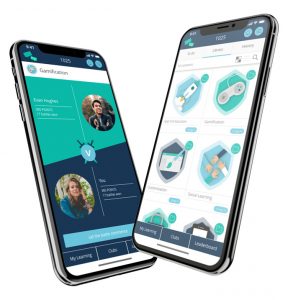
Learning should also be accessible on the go. On average, we pick up our phones 58 times a day. As such, you need to tap into the modern learner’s mobile phone obsession and create a mobile learning app.
A mobile app is a great way to engage learners. Take a look at these mind-blowing stats that Growth Engineering Learning App generated during 2020 (per learner / on average):
- 7 Logins to the app per day
- 4 Training modules completed per week
- 9 Posts to Social Feeds per week
- 810 Questions answered in Knowledge Battles per month
Of course, you don’t want to provide your learners with a generic mobile learning environment. You should find a solution that can be customised to your exact specifications.
You’ll want to add custom logos, tweak the colours, add your own terminology, icons and more. You can further optimise the user experience by localising the learning environment and changing the language.
And there’s more. You’ll be able to select a unique name for your app, an app icon and description text for the App Store and Google Play Store. This is your chance to delight your learners by flexing your creative muscles.
12. Terminology & Translations
Language barriers can be a big issue. They can prevent the steady flow of information and create knowledge silos throughout your organisation. What’s more, cultural misunderstandings cost US businesses more than $2 billion annually.
Your white label LMS shouldn’t just let learners select from multiple languages. It should permit you to customise the language sheet, so you can fine tune the translations, or even alter the terminology used across the platform.
For instance, you could change the ‘Learner Dashboard’ to ‘The Hub’. Or you could change the ‘Library’ to the ‘Catalogue’. ‘My Things to Do’ could become ‘My List’ and so on. Using familiar terminology will help encourage your learners to engage with your platform.
Final Words
A white label LMS is crucial if you want to guarantee user buy-in for your platform. As you’ve seen, the perfect white label LMS will allow you to customise every detail. From the building blocks of the platform, right down to the finishing touches (like your colour palette).
A flexible platform opens a world of different possibilities. You can build it to your specifications and create something completely unique. You can make full use of your brand, maximise user buy-in and shape the learning platform of your dreams.
Do you want to get started with a white label LMS and build a platform tailor-made for your company? Get in touch with the customisation experts at Growth Engineering and book a demo today!
Unlimited Learner Engagement on
The Impact Suite
